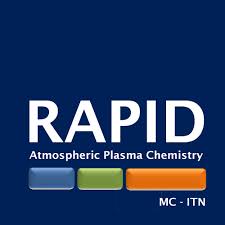RAPID (Reactive Atmospheric Plasma processIng – eDucation network)

Research
Plasma technology and the plasma processing of materials and surfaces is a complex and multidisciplinary science dealing with the design, simulation, modeling and manufacturing of functional materials for a variety of applications. RAPID (Reactive Atmospheric Plasma processIng - eDucation network) is an interdisciplinary initial training network (ITN) at the intersection of chemistry, physics and engineering aimed particularly at the development of non-equilibrium reactive processes in atmospheric pressure plasmas.
Plasma technology and the plasma processing of materials and surfaces is a complex and multidisciplinary science dealing with the design, simulation, modeling and manufacturing of functional materials for a variety of applications. RAPID (Reactive Atmospheric Plasma processIng - eDucation network) is an interdisciplinary initial training network (ITN) at the intersection of chemistry, physics and engineering aimed particularly at the development of non-equilibrium reactive processes in atmospheric pressure plasmas.
The great success of low-pressure plasmas enabling a multitude of applications ranging from material synthesis, automotive and microelectronics can be repeated. In addition, even more applications can be realized due to the easy integration of atmospheric-pressure (AP) plasmas in current industrial processes. Emerging research topics and fields such as large area solar cells, barrier coatings to improve the permeation properties of polymers and plasma chemical gas conversion are selected within RAPID.
The research success requires a specific training covering diverse aspects such as modeling and simulation of plasmas and surfaces, diagnostics to feed these models and the implications for industrial scale-up and the realization of an interdisciplinary training involving the disciplines of physics, chemistry, and engineering.
RAPID will create the platform for a truly European PhD in plasma technology. This research and training will be accomplished in a coordinated effort involving 10 academic and 10 industrial partners from 8 European countries.